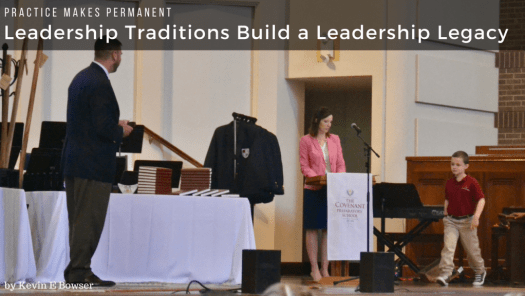
I pondered recently the value of “traditions” when it comes to building a legacy of leadership. And I got a lot of interesting feedback and comments from folks who reached out to me directly. And the one that kept coming up over and over was this. “What is more important – The tradition, or the one who is responsible for maintaining and upholding the tradition?”
That is a tough question, isn’t it? It is tough because, at the end of the day, the tradition is only as “valuable” as the one (or ones) who maintain it.
I get to be a part of or visit many, many organizations as part of my job and due to the consulting that I do with non-profit organizations. Each of them would tell you that they have a corporate culture. Many would say that they have some traditions that they hold dear. Yet many of the leaders within those organizations are frustrated and confused by the fact that the culture and traditions do not seem to be permeating the entire organization. Why is that?
Traditions Without Foundations
One of the common reasons for the lack of traditions and the legacy that they bring is that organizations lack the foundational principles on which traditions and legacies are built. They believe that culture is built by providing a good write-up in the New Employee handbook. Unfortunately, the handbook does not establish the “Why?”? And many times it doesn’t even address the “How?”. And the “How” is infinitely easier to explain than the “Why?” Perhaps traditions are like values. They are not taught. They are caught!
Are you building a foundation where the traditions can be observed and followed because of how well they are defined and lived out by the leadership of the organization?
Traditions Without Credible Leadership
The last sentence of the section above really hints at the problem that no one is really willing to acknowledge. It is like the ancient proverb that says: “A man that thinks he is leading, yet has no followers, is only taking a walk.”
After the sting of that thought begins to go away, let’s consider the role that you and I, as leaders, play in the instilling of leadership traditions throughout the organization. Especially when it comes to young leaders and those leaders that are the “up and coming” leaders in an organization.
The first and foremost factor when it comes to the successful instilling of leadership traditions in an organization is that you and I, as leaders, MUST be great examples of those leadership traditions. I was reminded again recently of this when I came across the Knight’s Code that is upheld by an organization that is very near and dear to my heart. That code says: Continue reading “Traditions Need a Foundation and a Credible Leader”











